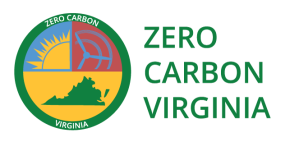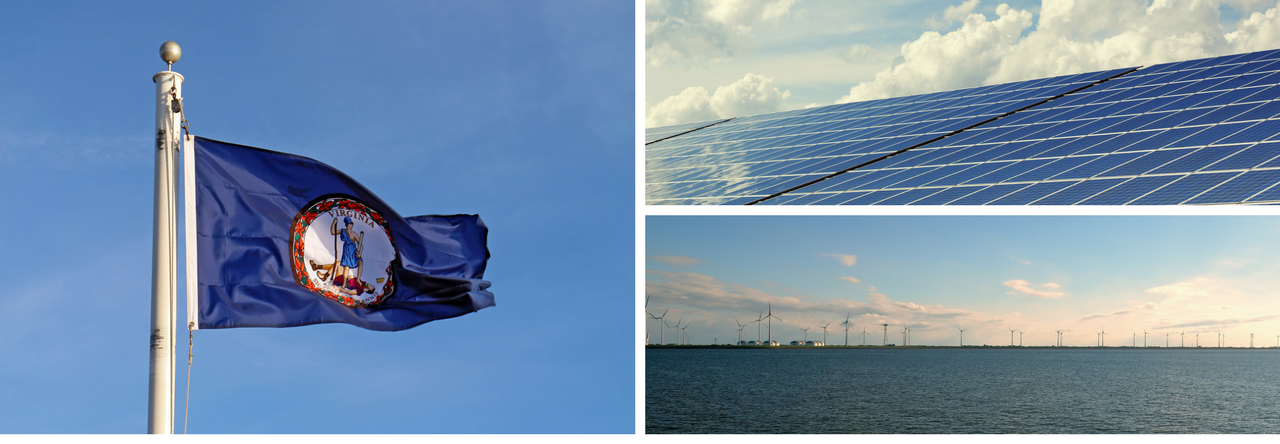Zero Carbon Virginia, a citizen’s group seeking a non-partisan path toward a zero-carbon energy future, hosted the Virginia Energy Transition Summit in Richmond, Virginia, on Saturday, August 24, 2019. The educational and informational event provided a group of Virginia General Assembly members and staff the chance to discuss the opportunities and challenges of the ongoing transition to cleaner energy resources that are developing across the United States.
Former Congressman Bob Inglis opened the event with the story of his transition from climate change skeptic to being a leading conservative voice for taking action on climate change. Mr. Inglis, now with George Mason University’s Energy and Enterprise Initiative, explained the politicization of climate change and shared how the political climate is now shifting to the point where more conservative groups and influencers are speaking up for action to be taken. With a good dose of irony and humor, Mr. Inglis explained how Al Gore’s activism led to much of the conservative backlash, yet one of Al Gore’s key propositions, pricing carbon, is a “high octane” conservative approach to the problem. Mr. Inglis provided the group with not only a sense of urgency to act, but also a sense of hope that we will find effective and enduring solutions to address the climate crisis.
Dr. Karl Hausker of the World Resources Institute followed with a summary of what is necessary to keep global temperatures from rising to unacceptable levels by cutting net carbon emissions to near zero by mid-century. He highlighted that the four keys for getting to a low-carbon future are decarbonizing power generation, maximizing energy efficiency, electrifying fossil fuel use, and utilizing carbon capture and storage. Dr. Hausker also explained how utility scale solar and wind are lower cost options to fossil fuel generation, when comparing individual production facilities. But when comparing system costs, the costs of integrating variable renewable energy resources into the grid rises steeply when renewables exceed 50% to 60% of generation. Dr. Hausker also highlighted Virginia’s nuclear generation and the role it could play in achieving low carbon emissions in Virginia.
Dr. Hausker wrapped up by concluding that setting standards that focus on reducing carbon as opposed to prescribing set percentages of renewable energy generation gives states more options for cutting carbon emissions, which will have a greater chance for success. Dr. Hausker explained that our best option is to “spread our chips” and place our bets on an array of solutions rather than going all-in on any single pathway.
Gene Hinkle, Managing Director GE Energy Consulting, next shared insights from his work on integrating renewables into the grid. Mr. Hinkle highlighted numerous examples of high levels of renewables integration, including in places like Hawaii, Texas, and Ireland. He also shared that in countries and regions with high renewable energy penetration, there are times when the grid operator is required to run conventional generation, such as fossil fuels, during periods of no wind and no sun to meet demand.
Mr. Hinkle provided an overview of the regional grid that Virginia is a part of, the PJM grid, and the recent work GE Energy Consulting has conducted on modeling the integration of wind and solar onto the grid. The study analyzed up to 30% integration within the PJM footprint. With some required grid expansion, the results show that adding a range of renewable resources across the PJM grid could lead to lower costs and not significantly impact grid reliability. Mr. Hinkle said, “Electric grid operators manage three obligations: stability, reliability, and economics…. The possible path forward to a zero-carbon footprint in Virginia can be achieved through strong partnerships with tech experts, key stakeholders, policy makers, and the community to develop a phased transition plan that incorporates existing and new technologies.”
Former Bureau of Labor Statistics (BLS) Economist Rick Clayton wrapped up the formal presentations with an overview of Virginia’s energy economy. Mr. Clayton highlighted the fact that Virginia is a significant importer of energy, more than 80% . Virginia’s oil, gas, and coal industries are small and getting smaller. The greater than $13 billion spent buying energy and fuels from outside of Virginia represents 2.5% of Virginia’s GDP and equates to the creation of more than 95,000 jobs outside of the commonwealth; jobs that otherwise could be created in Virginia in renewables.
Mr. Clayton also shared data showing that Virginia lags the rest of the nation in job and income growth. Noting that Virginia is behind neighboring states in deploying solar and wind energy, Mr. Clayton said, “It would be a win-win to invest in Virginia’s clean energy future—with new solar and wind jobs and wealth that stay here—rather than exporting our money and jobs buying carbon-based energy from other states. Further, investments in solar could re-employ Virginia’s workers losing their jobs in coal, oil, and gas and work to protect the Eastern Shore from sea level rise and storm surge damage.”
The General Assembly members and presenters were joined by representatives of Virginia’s electric utilities, various environmental advocacy groups, and the Virginia Department of Mineral and Mines. The event was moderated by Karen Schaufeld of Powered by Facts.
In addition to the informative presentations, there were numerous discussions about how to move Virginia forward on realizing a zero carbon future. The summit provided an opportunity for legislators to learn and ask questions about the latest developments in energy technology and related regulatory issues. Several challenges were discussed, including potential locations for new solar generation facilities and the associated transmission infrastructure. In addition, the group discussed how incentives play a role in expanding the use of renewables; however, incentives for renewables have not been a part of Virginia’s policies.
The summit was a productive step in the ongoing transition to Virginia’s clean energy future. Special thanks for Delegate David Reid for co-hosting the event.
Event Presentations
Presentations from the event are available at the below links.
- Zero-Carbon Challenges and Solutions – Dr. Karl Hausker
- Systems Integration – Gene Hinkle
- Jobs for Virginia – Rick Clayton

